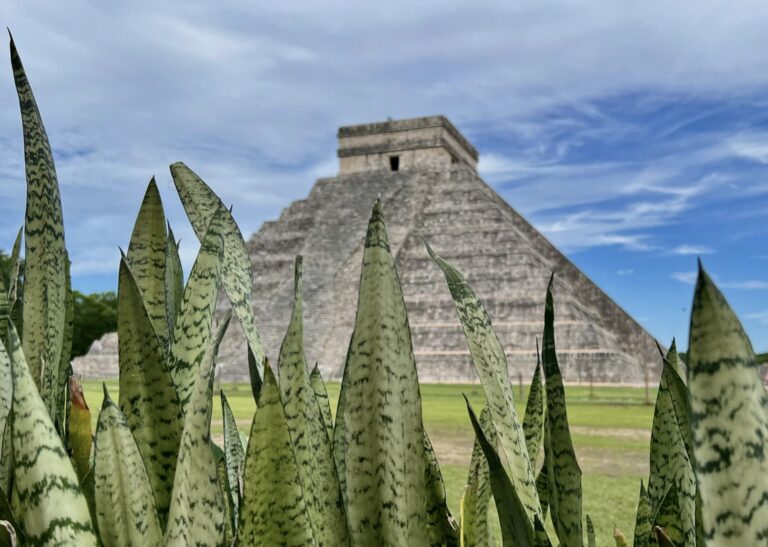
If you’re planning a vacation in Cancun, or anywhere in the Riviera Maya, a Chichen Itza Tour is likely high on your “to-do” list—and for good reason. Chichen Itza is one of the best-preserved archaeological marvels on the Yucatan Peninsula, drawing travelers from all over the world. There are many tour operators in Quintana Roo (the state where you’ll be vacationing) that organize day trips to Chichen Itza, which is located in the neighboring state of Yucatan. In this article, we’ll discuss what to expect on a typical trip from Cancun to Chichen Itza and share tips on how to make the most of your experience.
The Start of Your Chichen Itza Tour From Cancun: The Pickup Time
If you’re staying at a resort in Cancun, you can expect an early pickup—really early. Most tours leave around 6 a.m. If you’ve booked a small group tour to Chichen Itza, your minivan will likely make several stops to pick up other participants along the way through the Hotel Zone. Once everyone has been picked up, you might be able to catch a couple of hours of sleep on the way to Chichen Itza, as it’s a long ride. Depending on the traffic and the exact route chosen by your operator, it may take up to three hours to get there.
As mentioned earlier, the archaeological site of Chichen Itza is located in the neighboring state of Yucatan, about 130 miles (208 km) from Cancun. The ride will take around 2.5 hours each way. So, with a 5-hour round trip ahead of you, we don’t really believe you can squeeze Chichen Itza into a half-day itinerary. Plan to dedicate an entire day to your Chichen Itza visit.
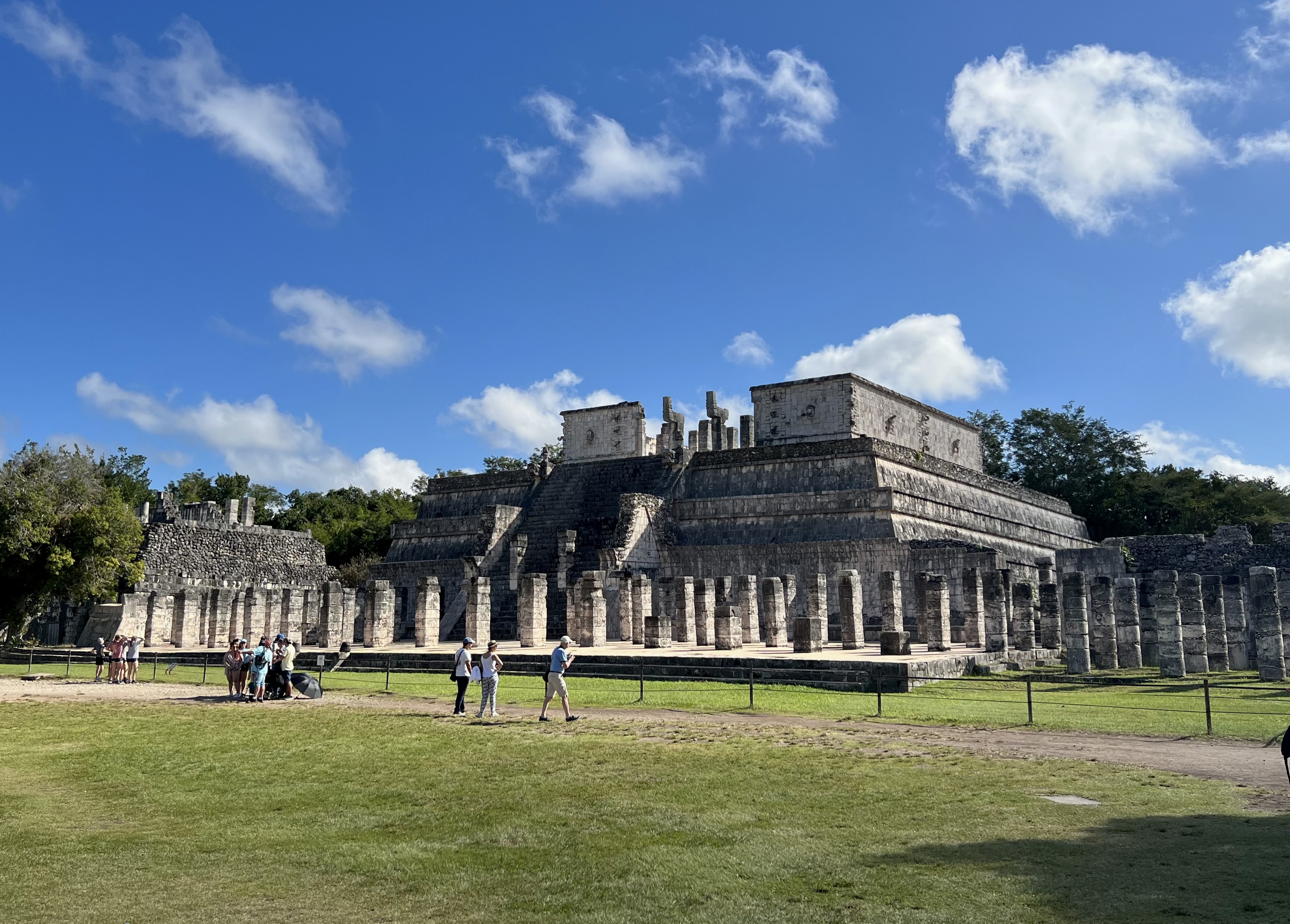 At the Archeological Site
At the Archeological Site
The tours we’ve been on always included a guide (who you’ll meet on your transport early in the morning), so you don’t need to worry about that. Your guide will take care of purchasing entrance tickets at the site. Once you get past the turnstiles, there will be some walking involved. You’ll also encounter many vendors selling various souvenirs. If you decide to buy something, be sure to haggle—chances are you’ll be able to negotiate a better price. Vendors are on almost every corner of the site, so don’t buy souvenirs right away. Shop around to see different options, though most vendors sell similar items.
Usually, you have a choice: stay with the group and listen to your guide, or explore on your own. If you decide to venture out on your own, make sure to get your guide’s phone number beforehand, just in case you lose sight of the group.
How much time will you get at the site? Approximately two hours. It’s not great, but not terrible either—if you move quickly, you’ll be able to see everything the site has to offer. Remember, these tours are on a tight schedule, trying to fit everything into one day. If you want to explore without being rushed by a guide, it might be better to rent a car and visit Chichen Itza on your own.
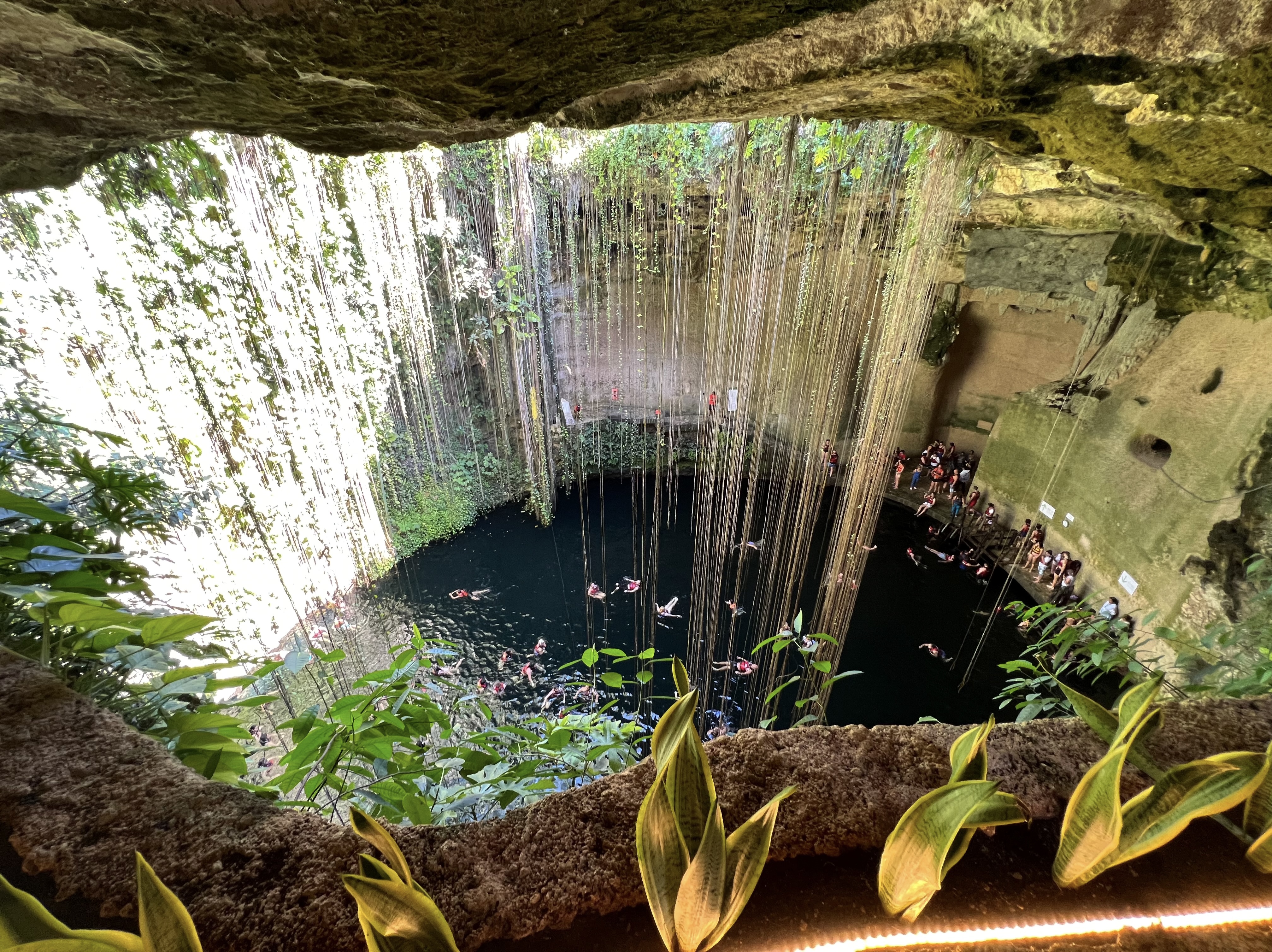 Cenote Visit
Cenote Visit
Almost all Chichen Itza tours from Cancun include a visit to a cenote. After visiting Chichen Itza, the next stop is usually one of the many cenotes around Valladolid, where you will have a buffet-style lunch, which may or may not include alcohol. Some tours may offer a fixed-course lunch instead. Typically, on your way to Chichen Itza, your guide will ask about dietary preferences (fish, meat, vegetarian), and by the time you finish at Chichen Itza, your lunch will be ready at the cenote.
No matter which cenote they take you to, prepare to be amazed by this natural wonder.
A cenote (pronounced “seh-NO-tay”) is a natural sinkhole resulting from the collapse of limestone bedrock exposing groundwater underneath. Cenotes are unique geological formations primarily found in the Yucatan Peninsula of Mexico. They are typically filled with clear, fresh water and often serve as a source of drinking water for nearby communities.
What are Cenotes?
Cenotes are created when the limestone ground above an underground river or cave system collapses, creating a natural well. Many cenotes have beautiful, clear turquoise water. Some of them are open air, while others can be partially or completely enclosed in a cave.
In ancient Mayan culture, cenotes were sacred and often used for ceremonial purposes, including offerings to the gods. Today, cenotes are popular attractions for visitors to Mexico, offering opportunities for swimming, snorkeling, and diving in unique underground environments.
Now might be a good time to remind you that you need a change of clothes, towel, and bathing suit. It’s better to bring your own towels and not risk the disappointment of them not being available at the site. You will have approximately an hour to an hour and a half for swimming (or a photo session, depending on your preference) in the cenote. After that, you’ll have around 40 minutes for lunch before leaving for the next stop on your itinerary.
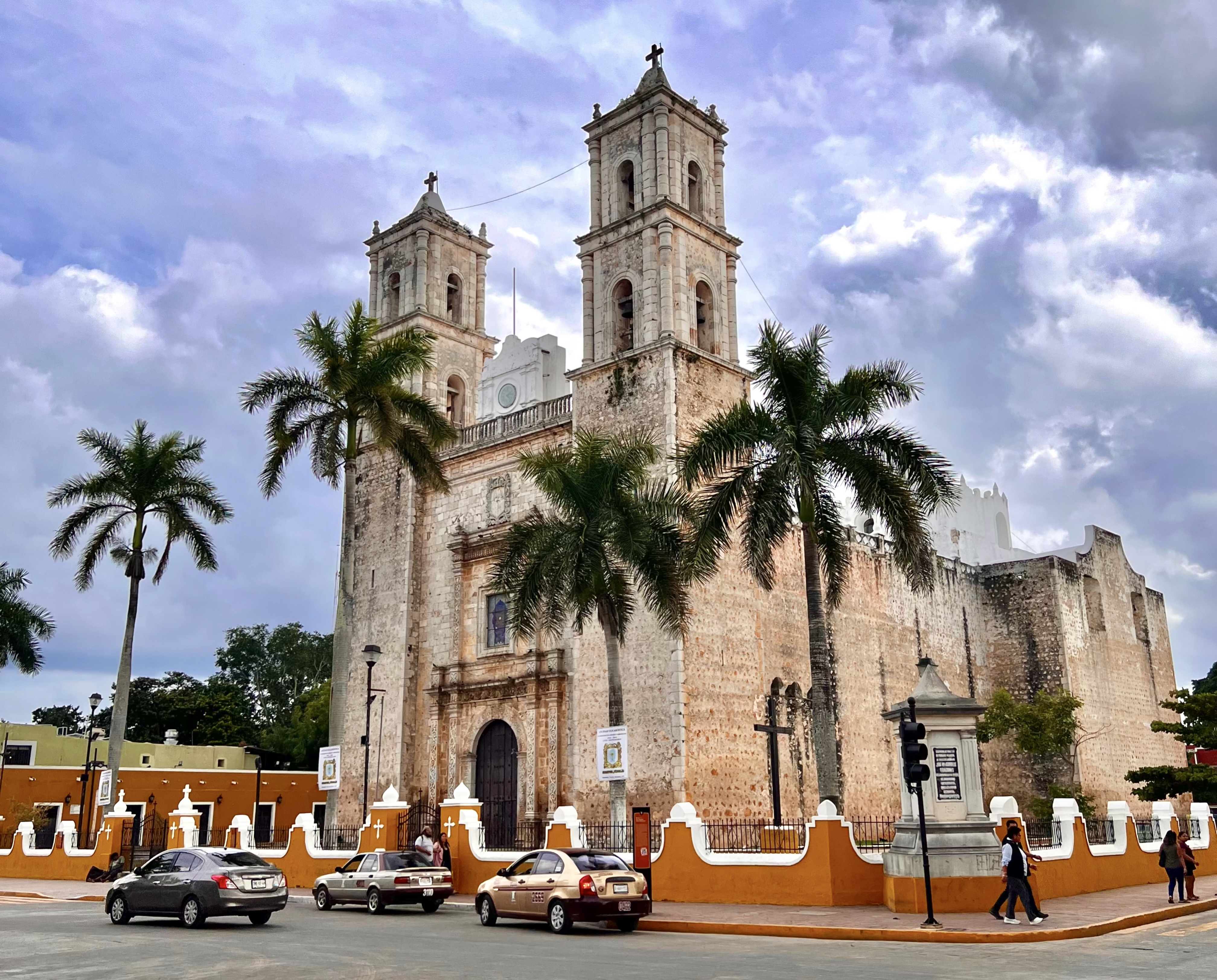
Valladolid
After a swim and lunch, most tours take their guests for a quick visit to Valladolid. Valladolid is a small, picturesque colonial town. It is located on the Yucatan Peninsula in the state of Yucatan and is known for its colorful architecture, historical charm, and vibrant culture.
Valladolid’s location, about 40 kilometers from Chichen Itza, makes it an ideal stop for travelers visiting the archaeological site. It allows tourists to experience the rich cultural heritage of the Yucatan region, offering a mix of colonial history, local flavor, and natural beauty all in one place.
The town has many well-preserved colonial buildings, colorful facades, and charming streets that make it a beautiful place to explore. The notable landmarks surround the central square, or zocalo. The main such landmark is the San Servacio Church (Iglesia de San Servacio), which dates back to the 16th century.
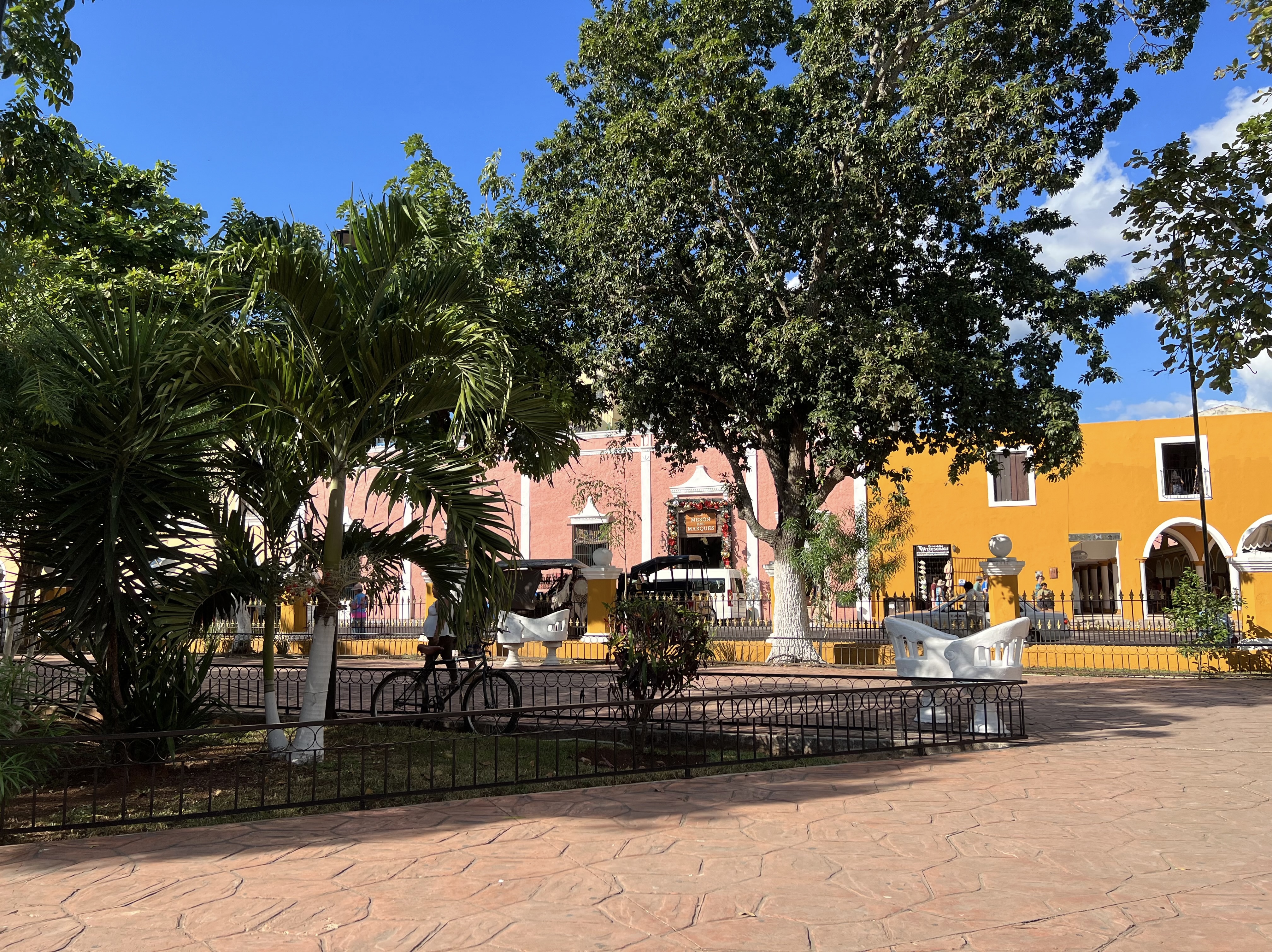
Dessert Stop
We call this stop a “dessert stop” because most tours stop at the main square, right next to a family-owned ice cream shop that sells local varieties. If they take you there, be sure to try the sweet corn or soursop flavors. While you’re enjoying your ice cream, take a moment to explore the main square garden, which is just across the street from the shop.
Valladolid’s main square is home to a beautiful garden famous for its iconic “lovers’ benches” (sometimes called “confidenciales”. These unique S-shaped benches allow two people to sit facing each other while remaining close. They are perfect for couples wanting to share an intimate conversation without having to strain their necks.
There are many souvenir shops around the main square. So if you didn’t buy anything at the archaeological site of Chichen Itza, this is your next best chance. If you’ve been racking your brain for something unusual or unique, consider buying chicle. It is the original chewing gum made from milky latex of the sapodilla tree! Some of the souvenir shops in the main square have it, to which we can attest to as we’ve bought it there. But don’t expect too much from the gum; it usually doesn’t have much flavor.
You won’t have a lot of time during this stop, so don’t stray too far away from your group.
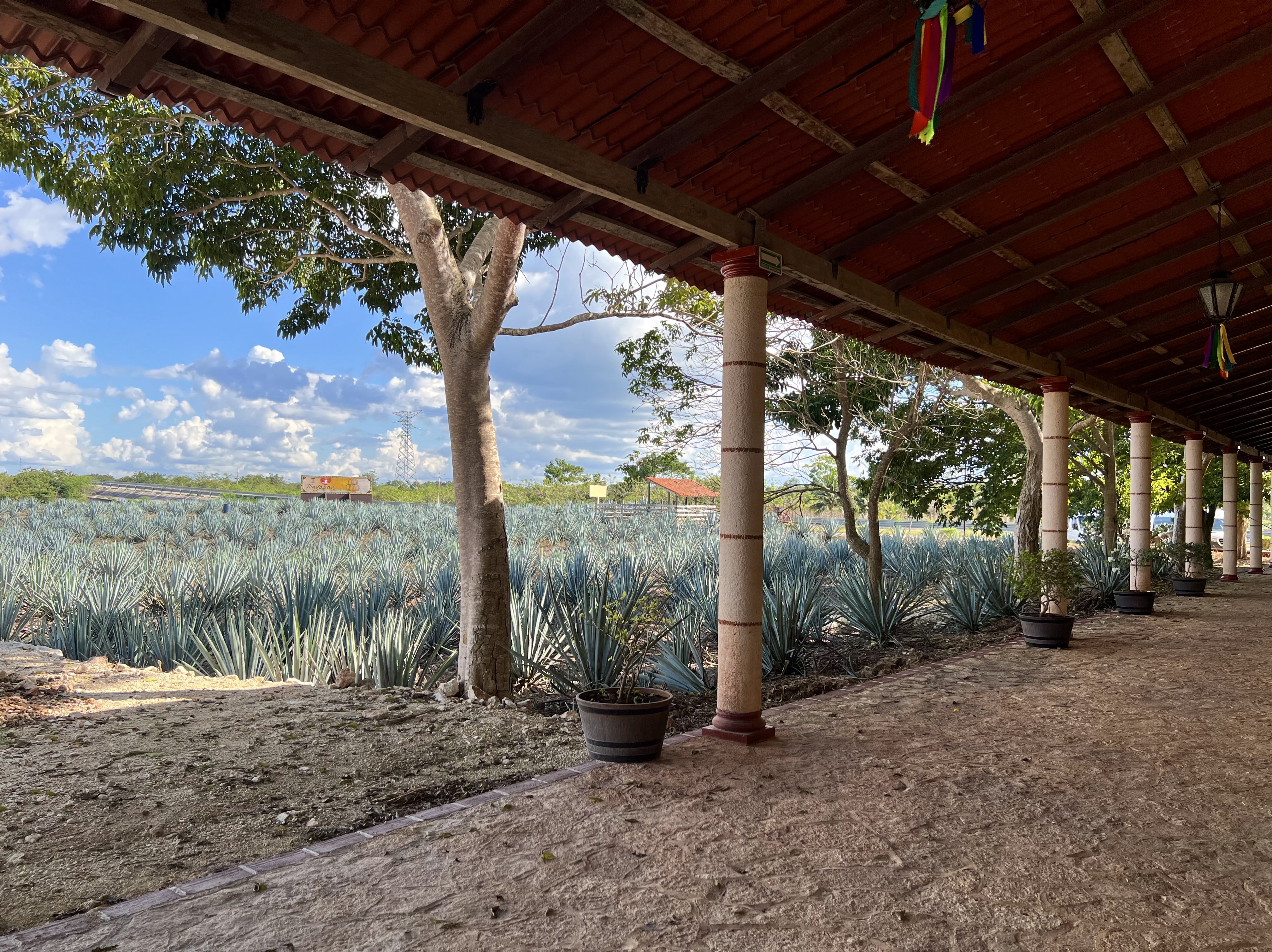
Tequila Tasting
On your way back to Cancun, most tours will also take you to a tequila tasting at a local artisanal distillery located just outside Valladolid. It’s a small, picturesque building on the side of the road adjacent to an agave field. They have a souvenir/tequila shop where they sell their own varieties of tequila, along with some brands you can find in liquor stores in Cancun. Here, you’ll also have the chance to sample tequilas of different ages (añejos, reposados, etc.). Since we aren’t big tequila connoisseurs, we can’t really vouch for the complexity of the bouquet, subtle tones, and aftertastes. However, we can say that some of the varieties were incredibly smooth.
In addition to tequila, they sell other local products like honey, which is unique because a local variety of bee called Melipona produces it. This bee doesn’t have a stinger. The honey it produces is famous for its medicinal properties, including anti-inflammatory and antimicrobial benefits. Melipona honey has been traditionally used in Mayan medicine for centuries, particularly to treat wounds and respiratory infections. It’s rare and highly valued for its potential health benefits.
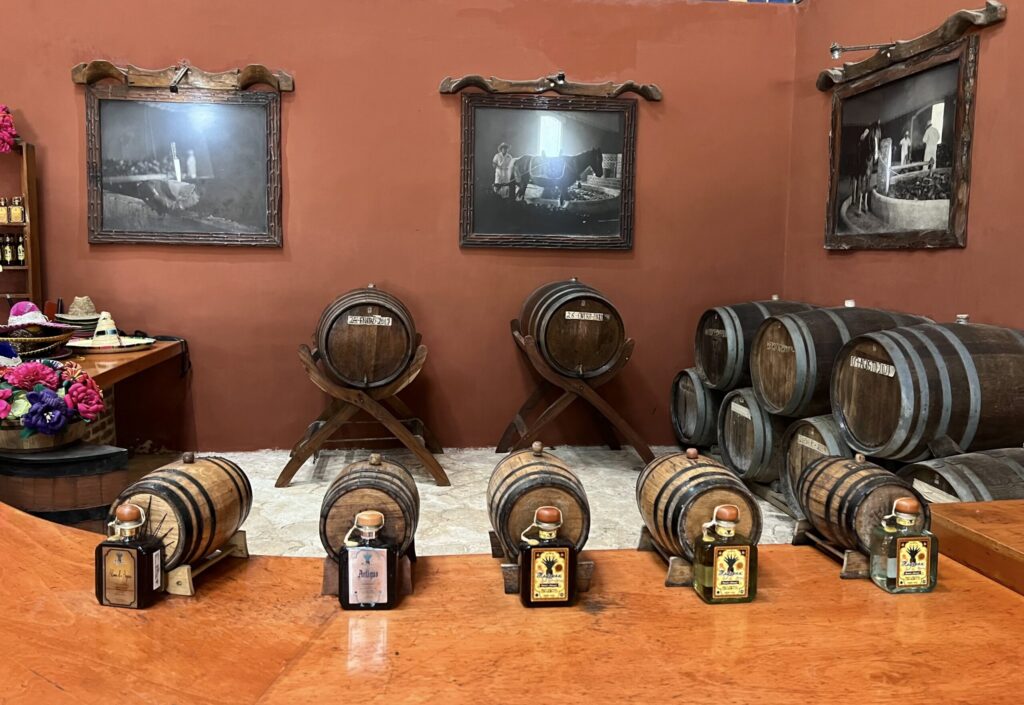
Chichen Itza Tour From Cancun: Conclusion
There are dozens, if not hundreds, of different tour operators offering tours to Chichen Itza from Cancun. However, their itinerary is more or less the same.
As we mentioned, tequila tasting often wraps up a typical day trip to Chichen Itza. We’ve taken several Chichen Itza tours with different operators, and this is what a typical itinerary looks like. If you like this plan, make sure to check with your tour operator to see what their trip includes. Remember, this is an “ideal” version of the day—things might change if someone takes extra time for shopping or if unexpected delays come up. Flexibility is key!
What to Pack and Other Considerations
We recommend wearing lightweight, loose-fitting clothing that covers your skin to protect you from the sun at Chichen Itza. Long-sleeved, UV-protective rash guards are a great choice. And don’t forget sunscreen—choose a reef-safe one with a high SPF and reapply it often, especially after swimming or sweating. The sun on the Yucatan Peninsula is incredibly strong, and many people underestimate its intensity.
Comfortable walking shoes are essential since you’ll be on your feet for quite a while at the archaeological site. A hat and sunglasses are also must-haves for sun protection.
Packing a few snacks, like nuts or energy bars, is always a good idea. It’s also helpful to have pain relievers, such as Advil or aspirin, just in case.
Most importantly, stay hydrated by drinking plenty of water throughout the day. Have a blast exploring the wonders of Chichen Itza!
Ready to delve deeper into the mysteries of the ancient Maya? Discover the most fascinating Mayan ruins in Mexico with our comprehensive guide!

